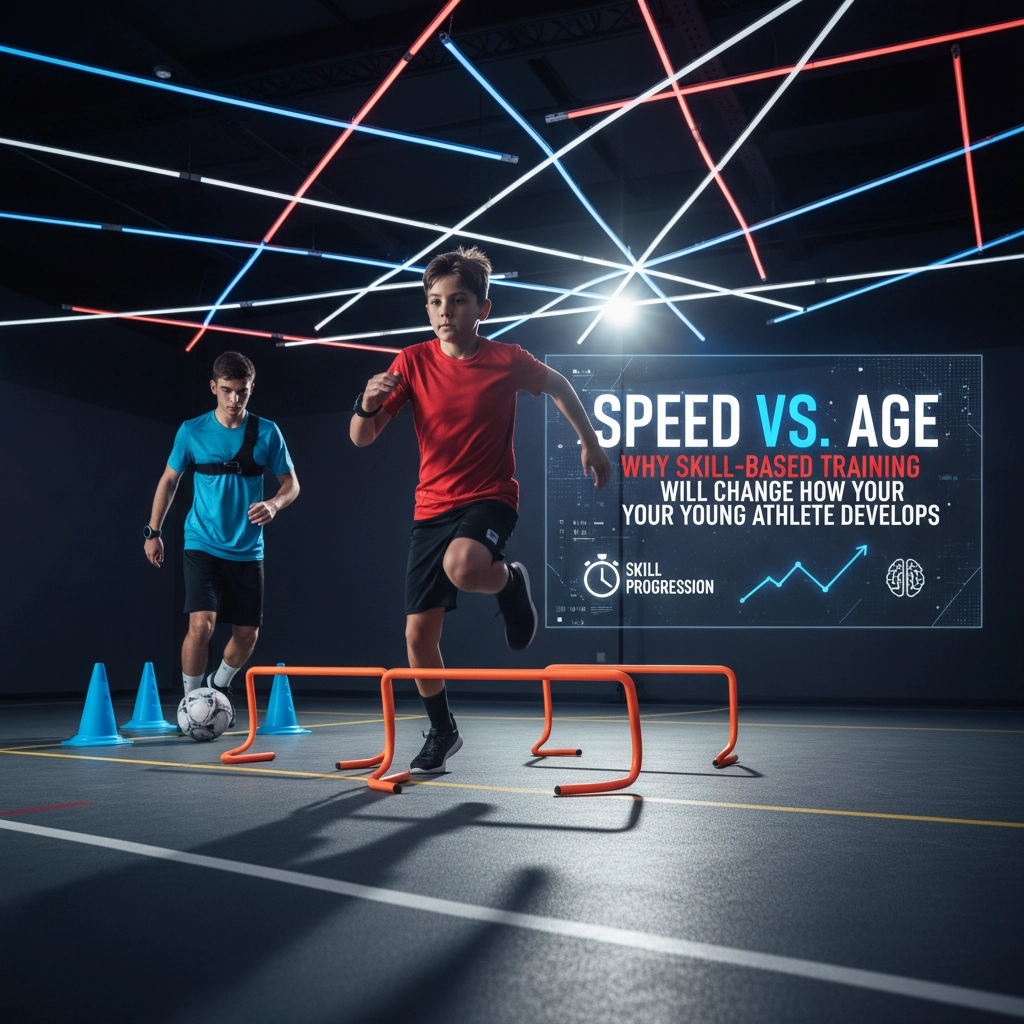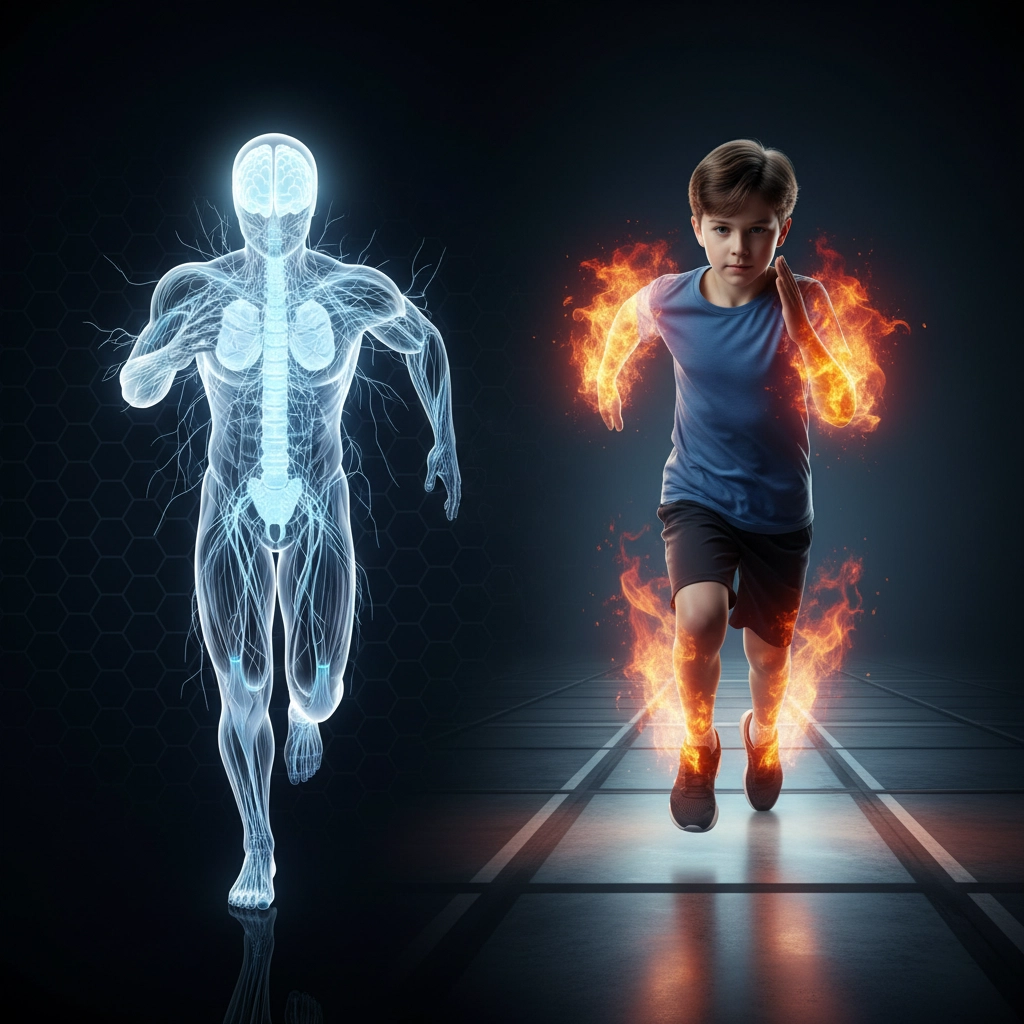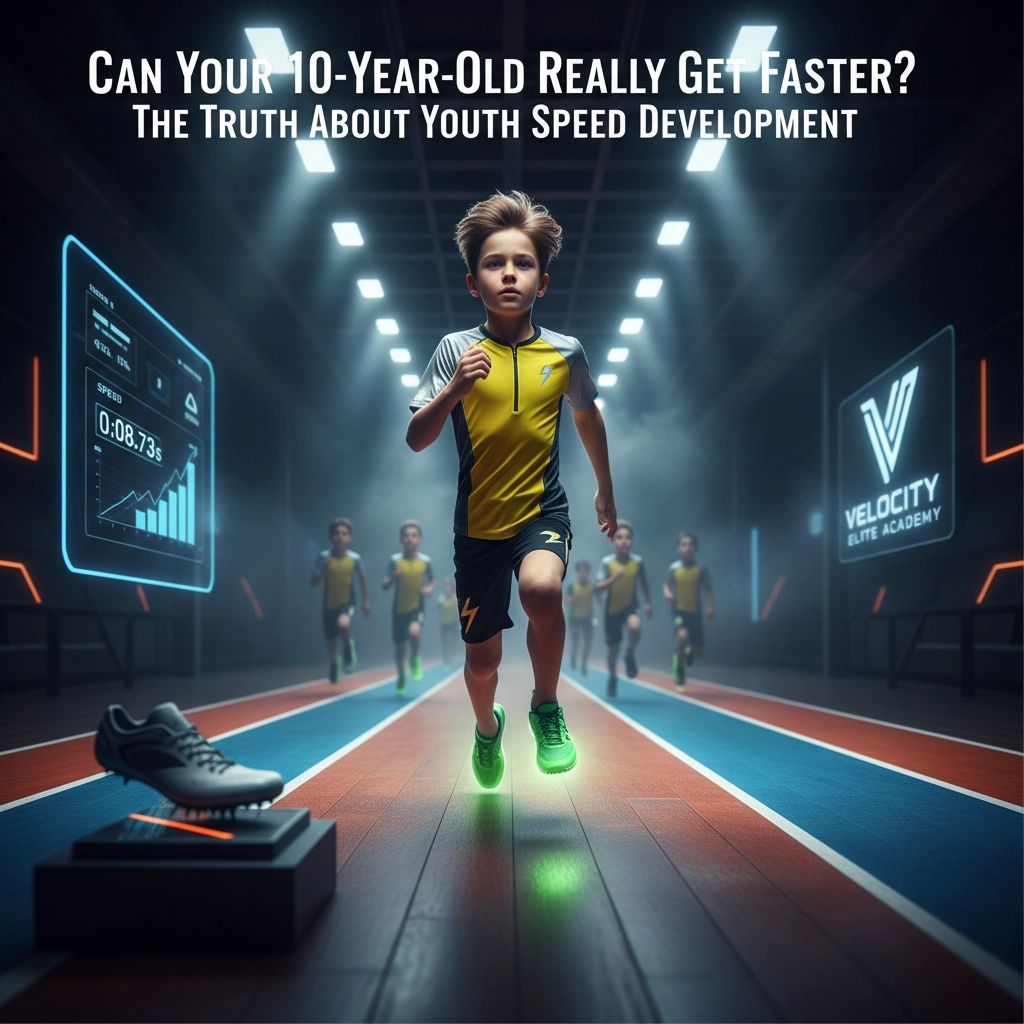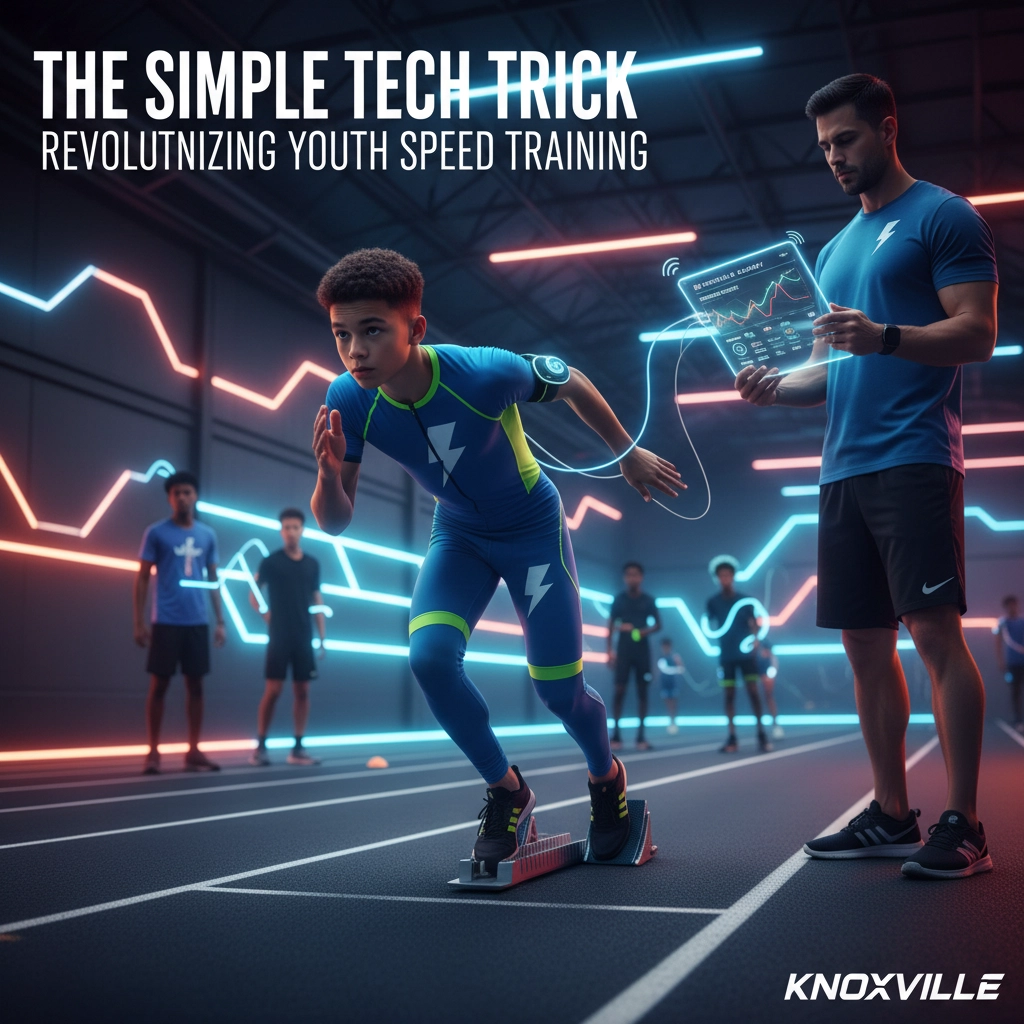If you've ever watched your 8-year-old sprint across the soccer field with wild enthusiasm but questionable form, you've probably wondered: "When should my kid start real speed training?" It's one of those questions that keeps parents up at night, scrolling through endless articles about athletic development.
Here's what might surprise you: the answer isn't really about speed at all. It's about building the right foundation at the right time, and that changes everything about how young athletes develop.
The Age Factor: It's Not What You Think
Most parents think speed training is reserved for high schoolers who are already fast. But here's the thing, youth athletes can actually start structured speed and agility programs as young as 5-6 years old. The catch? What "speed training" looks like for a 6-year-old (our Ignition program) should be completely different from what it looks like for a 16-year-old (our Acceleration Program).
Before puberty hits, when your child improves their speed, it's not because their muscles are getting bigger or stronger. It's because their brain is getting better at coordinating their movements. Think of it like learning to ride a bike, once those neural pathways click, everything changes.
This is huge for parents to understand. Your 10-year-old isn't going to bulk up from training, but they absolutely can become more coordinated, more efficient, and yes, faster through skill-based training.
Why Skills Trump Pure Speed Every Time
Here's where most youth programs get it wrong: they focus on making kids run faster instead of teaching them how to move better. But skill-based training is like teaching proper grammar before writing poetry: it creates the foundation for everything that comes later.
When young athletes learn proper movement mechanics early, several incredible things happen:
Their confidence skyrockets. There's something magical about watching a kid master a new movement pattern. Suddenly, they're not just running: they're gliding. They make smarter decisions on the field because they trust their body to respond the way they want it to.
Injury rates plummet. This one's big for parents. When children develop proper body awareness and movement efficiency, they naturally put less strain on their joints and muscles. They're essentially building their own injury-prevention system without even knowing it.
Their brain-muscle communication gets supercharged. Speed and agility training done right develops the neuromuscular system, basically, it teaches the brain and muscles to work together more efficiently. But this only works when it's built on solid movement foundations.
The Critical Window You Can't Get Back
Here's something that might make you want to call and schedule a consultation today: once kids hit adolescence, their brains become much less flexible for learning new movement patterns. Those bad habits your teenager developed? They're going to be a lot harder to fix than if you had addressed them at 6-10 years old.
This doesn't mean older athletes can't improve: they absolutely can. But there's a special window during childhood where the brain is incredibly adaptable. Miss it, and you're working uphill later. That is what our Ignition program is all about.
At Athletic Republic Knoxville, we see this all the time. The kids who start with us early don't just get faster: they develop a completely different relationship with movement and athletics.
Development Over Competition: The Game-Changer
Here's where we need to have an honest conversation with parents: youth athletics has gotten a little crazy. Kids are specializing in one sport at 8 years old, playing year-round, and burning out before they hit high school.
The athletes who thrive long-term? They're the ones whose early training focused on development, not immediate results. This means:
Body awareness comes before intensity. Before your child starts sprinting at max effort, they should understand how their body moves through space. Can they land properly from a jump? Can they change direction without their knees caving in? These fundamentals matter more than their 40-yard dash time.
Movement variety beats specialization. Exposure to different movement patterns: jumping, crawling, skipping, changing direction: builds athletic adaptability. The soccer player who also does some basketball movements? They're going to be harder to defend because they have more tools in their toolbox.
Technique trumps results every time. A 12-year-old who runs with perfect form but posts a "slower" time is actually ahead of the kid who runs faster with terrible mechanics. Why? Because proper form is scalable. Bad habits just get reinforced.
The Mental Game No One Talks About
Speed and skill training done right doesn't just build better athletes: it builds better kids. When young athletes learn that effort leads to improvement, they develop what psychologists call a "growth mindset." They start seeing challenges as opportunities instead of threats.
This mental toughness and resilience shows up everywhere: in the classroom, in social situations, and yes, in sports. Kids who experience systematic skill development learn to trust the process, handle setbacks, and keep working toward long-term goals.
What This Actually Looks Like in Practice
So what does skill-based speed training look like for different ages? Here's a quick breakdown:
Ages 5-8: (Ignition) Focus on fundamental movements like running, jumping, skipping, and basic coordination drills. Think "athletic playground" more than "training facility." The goal is movement literacy: teaching kids that their body is capable of amazing things.
Ages 9-12: (Level 1 Acceleration) Start introducing more structured speed and agility work, but still emphasize proper form over intensity. This is where kids can start learning specific techniques for acceleration, deceleration, and change of direction.
Ages 13+: Now we can start talking about more traditional speed training, but it should still be built on those fundamental skills developed earlier. Athletes who have this foundation can handle higher-intensity training safely and effectively.
The Long-Term Payoff
Here's the beautiful thing about getting this right early: the benefits compound. Athletes who develop proper movement skills young don't just avoid the plateau that often comes with early specialization: they actually accelerate their development as they get older.
They enter high school with injury-resistant movement patterns, they adapt quickly to new coaching, and they have the confidence that comes from truly understanding their athletic abilities. Most importantly, they maintain their love for sports because their early experience was positive and developmentally appropriate.
Your Next Step
If you're reading this and thinking about your own young athlete, here's what we'd suggest: stop focusing on whether your kid is "fast enough" and start thinking about whether they're moving well. Are they developing good body awareness? Are they learning to love athletic challenges? Are they building skills that will serve them for years to come?
The great news is that it's never too late to start doing this right. Whether your child is 6 or 16, skill-based training can transform their athletic development. The earlier you start, the bigger the advantage: but the door is always open for improvement.
Ready to see what skill-based training can do for your young athlete? Schedule a free trial workout and let's build something amazing together. Because when you change how a young athlete moves, you change everything about how they develop.






